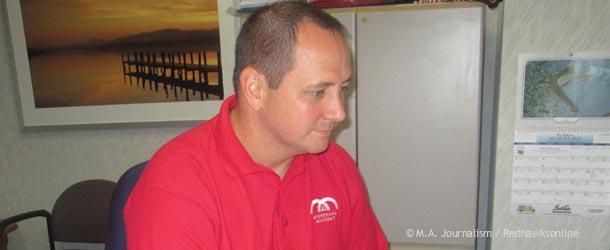College in high school: The benefits of PSEO as compared to AP courses
“It would be nice to know them in person,” said senior Leah Haack.
Haack spoke of her fellow classmates of the University of Northwestern – St. Paul, where she is taking on three fully online courses, English composition, History of western civilization and Biology- Medical Terminology. Haack believes that the PSEO program could help her achieve her goals for her senior year that is why she is a full-time PSEO student taking no classes at Minnehaha.
The Post-Secondary Enrollment Options Program was created by the Minnesota legislature in 1985, to give high school students a college experience while also giving them a chance to earn college or university credits and take classes that are not offered at their high schools, such as German for Minnehaha. Though at first glance it may seem as if PSEO offers the same things Advanced Placement courses or even College-in-the-Schools courses do, there are some differences.
Unlike the AP program at Minnehaha, PSEO students can take classes from general education, career and technical courses. Though AP courses offer some general education courses such as English, calculus and biology some other PSEO general education courses include political science, art history, anatomy and psychology. The career and technical courses include accounting, engineering and business.
PSEO is appealing for many reasons.
“I like the idea of having freedom and flexibility,” said Haack.
For her signing up for PSEO was a chance to get “a feel of college life,” interact with new people (even if it is only online), and to learn how to work.
“The most important thing is being self-motivated,” she said.
Senior Erin LeVahn experienced PSEO her junior year.
“I had time in my schedule that I needed to fill,” said LeVahn. “So it made sense for me to do a college class.”
LeVahn took psychology, through Northwestern University- St. Paul as well, where she was a part-time online student. Her schedule consisted of the average Minnehaha school day with a free hour 5th and 7th period. At home she would do homework for both Minnehaha courses and the Northwestern psychology course.
“There is a psychology class that’s available here,” said LeVahn, “but if I took PSEO I could get college credit and it didn’t cost me anything.”
With many valid points, LeVahn and Haack acknowledged just some of the benefits of PSEO. Offering classes either in a college classroom, online or a combination PSEO gives students the freedom to choose what works best. Part-time PSEO offers a high school student two learning environments: high school and college, whereas full-time places the student on college or university grounds. The environment is a change that some juniors and seniors like but it’s also a big plus that PSEO is free.
“Personally I think high school is a great four years,” said vice-principal Michael DiNardo. “I think we have enough to offer our students to be able to challenge them and to be able to give them a wide variety…[but] we can’t meet everyone’s needs.”
DiNardo makes sure PSEO and school scheduling works out in the best way possible. When a student decides to take a part-time PSEO course, that one course requires the student to drop two Minnehaha courses. With the added responsibility to pass/meet the requirements for the Minnehaha non-optional courses (such as capstone, four years of English, three years of science and math, etc.) PSEO seniors run the risk of late graduation.
Other than prerequisites, high school students hoping to be a part of PSEO have to meet certain requirements. Seniors must score at or above the 50th percentile on ACT or SAT tests or be in the top half of their class. Juniors must be at or above the 70th percentile or be in the upper third of their class and sophomores and freshmen must score at or above the 90th percentile or be in the top tenth of their class. It is rare to see sophomores and freshmen PSEO students because seniors and juniors receive first priority but the above requirements show that it is possible. Besides these requirements colleges and universities ultimately determine the readiness of the student. Whether hoping to be a part of PSEO or already a student the results vary for each individual.
A determined PSEO student can finish with credits for both high school and college or even earn an associate’s degree (also known as an undergraduate’s degree). For a less determined student the PSEO program might lead to a failed course, which then might lead to a late graduation (as stated above) and a permanent record on a college or university transcript.
Director-college counselor Richard Harris agrees with the idea of self-motivation, which was stated earlier by Haack.
“It’s right for students who are self-directed learners,” said Harris. “You have to be mature, you have to be willing to have older students in the classroom [or online forum], and you have to be prepared to be challenged by college professors.”
It has been a transition for Haack.
Technically graduating as a home school student, by state requirements, Haack has had to rearrange her school schedule. Wake up at seven. Study until lunch. Hour break. Study until dinner. Horseback Ride. Beginning school on 3 Sept. 2013, Haack was like any other senior: nervous and excited.

